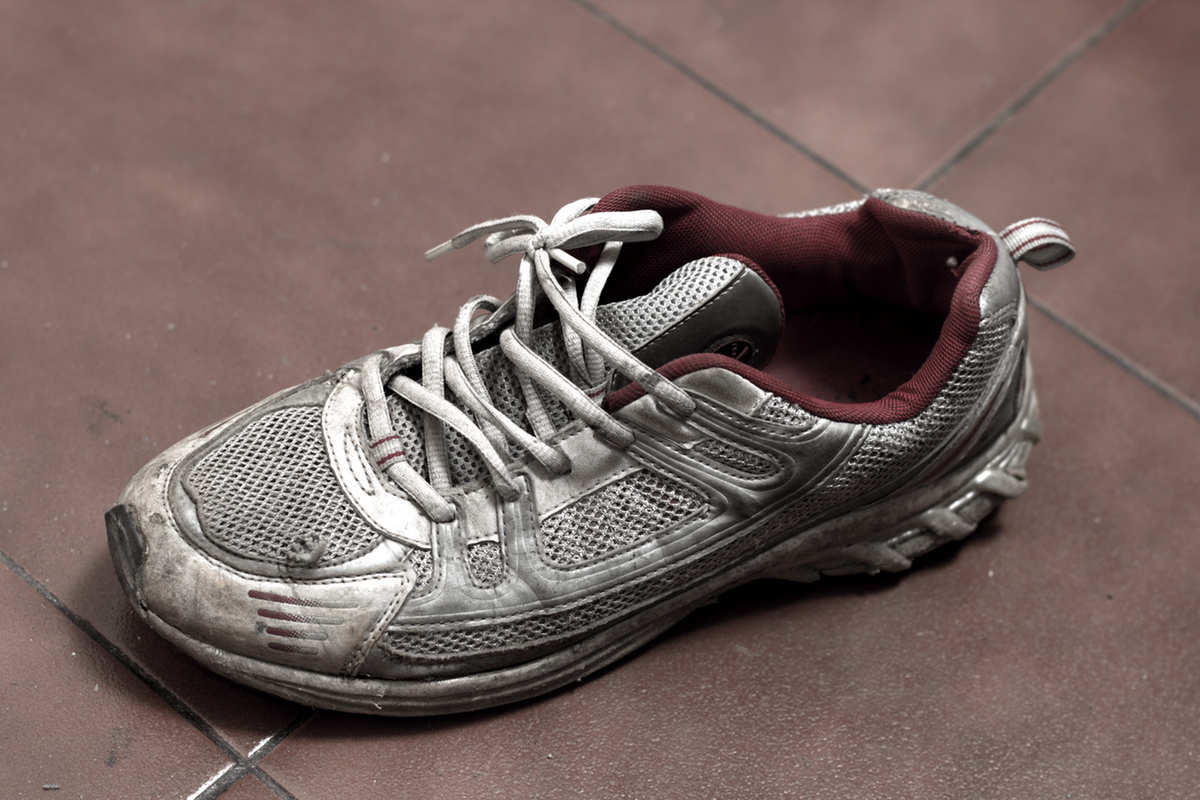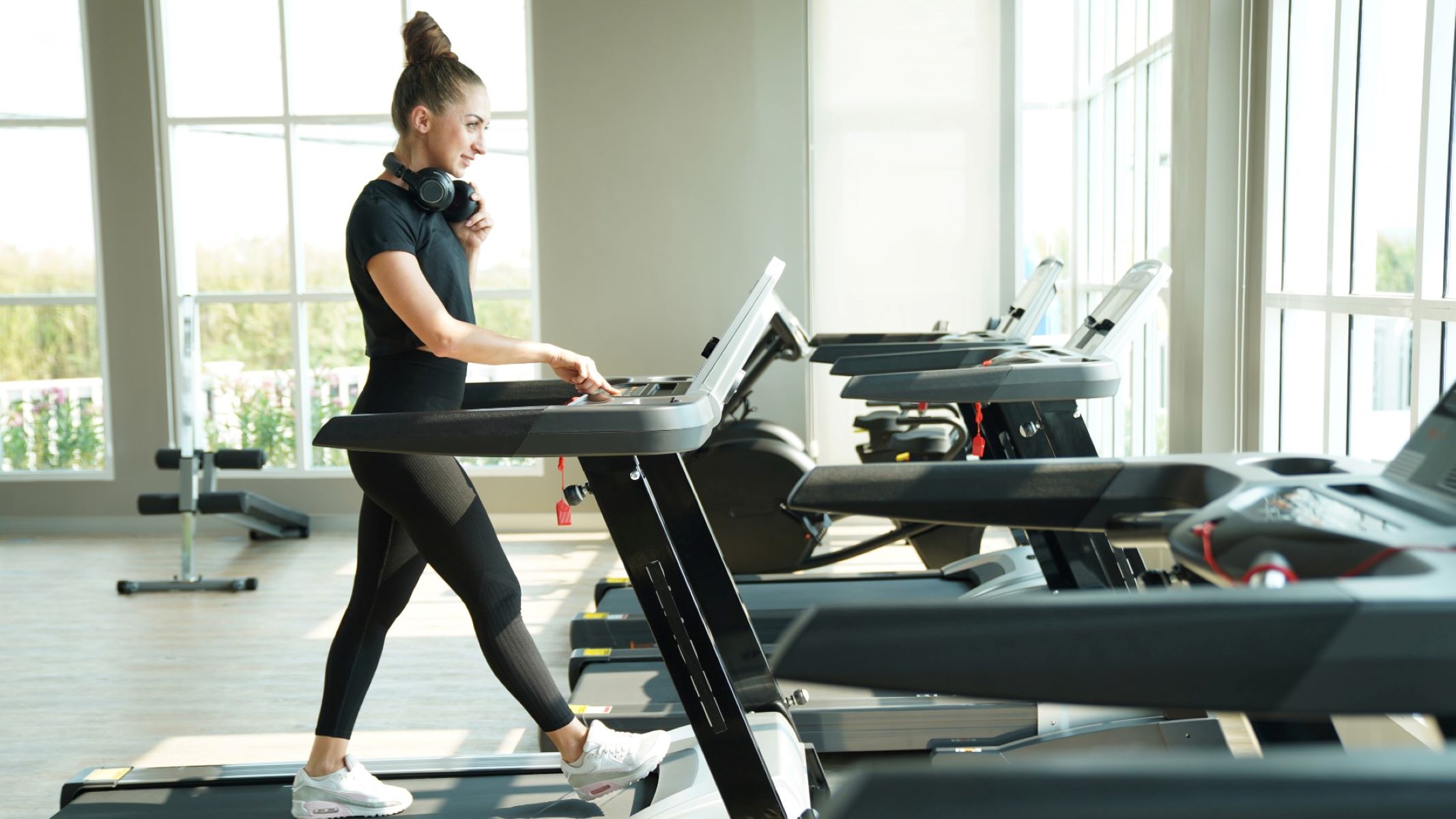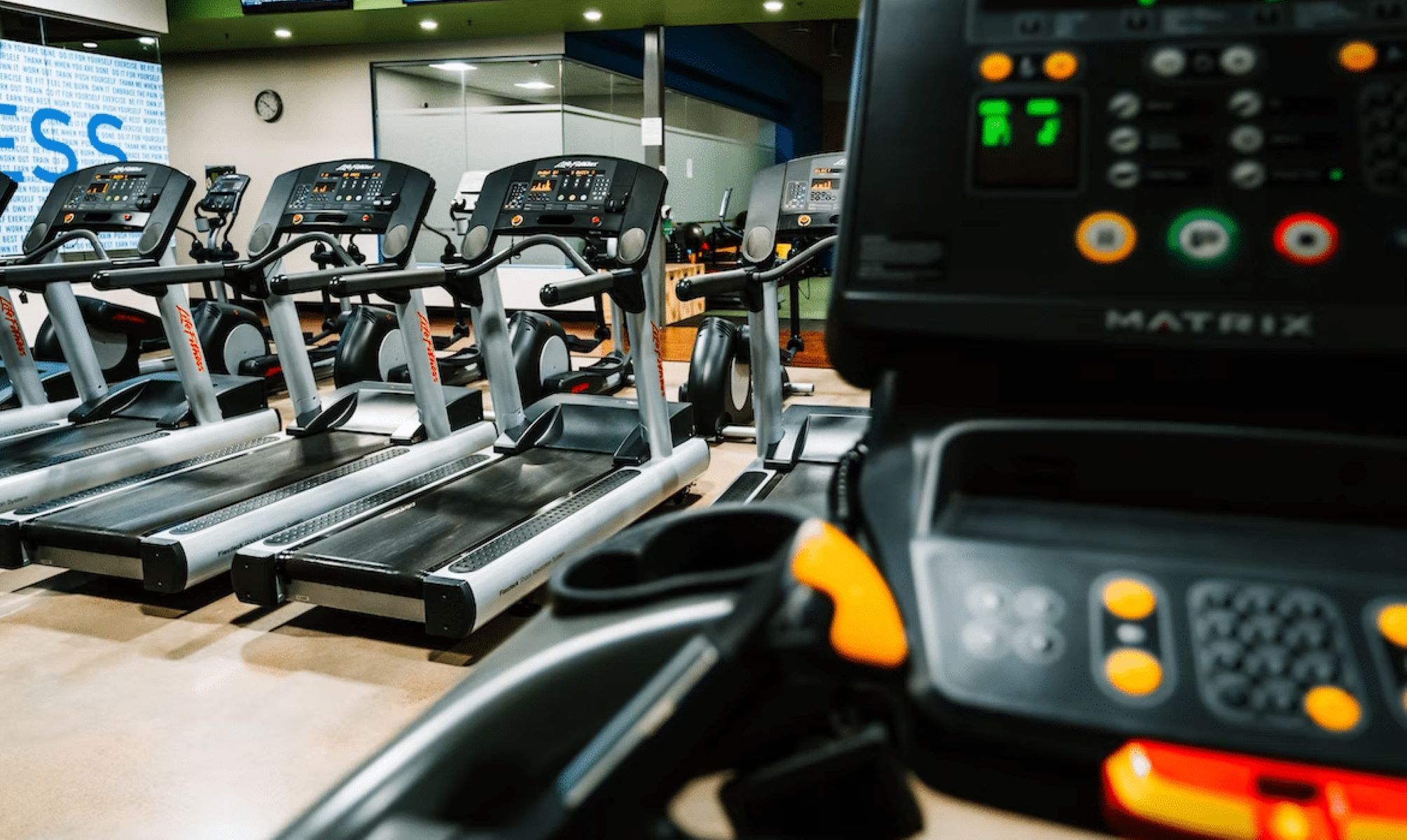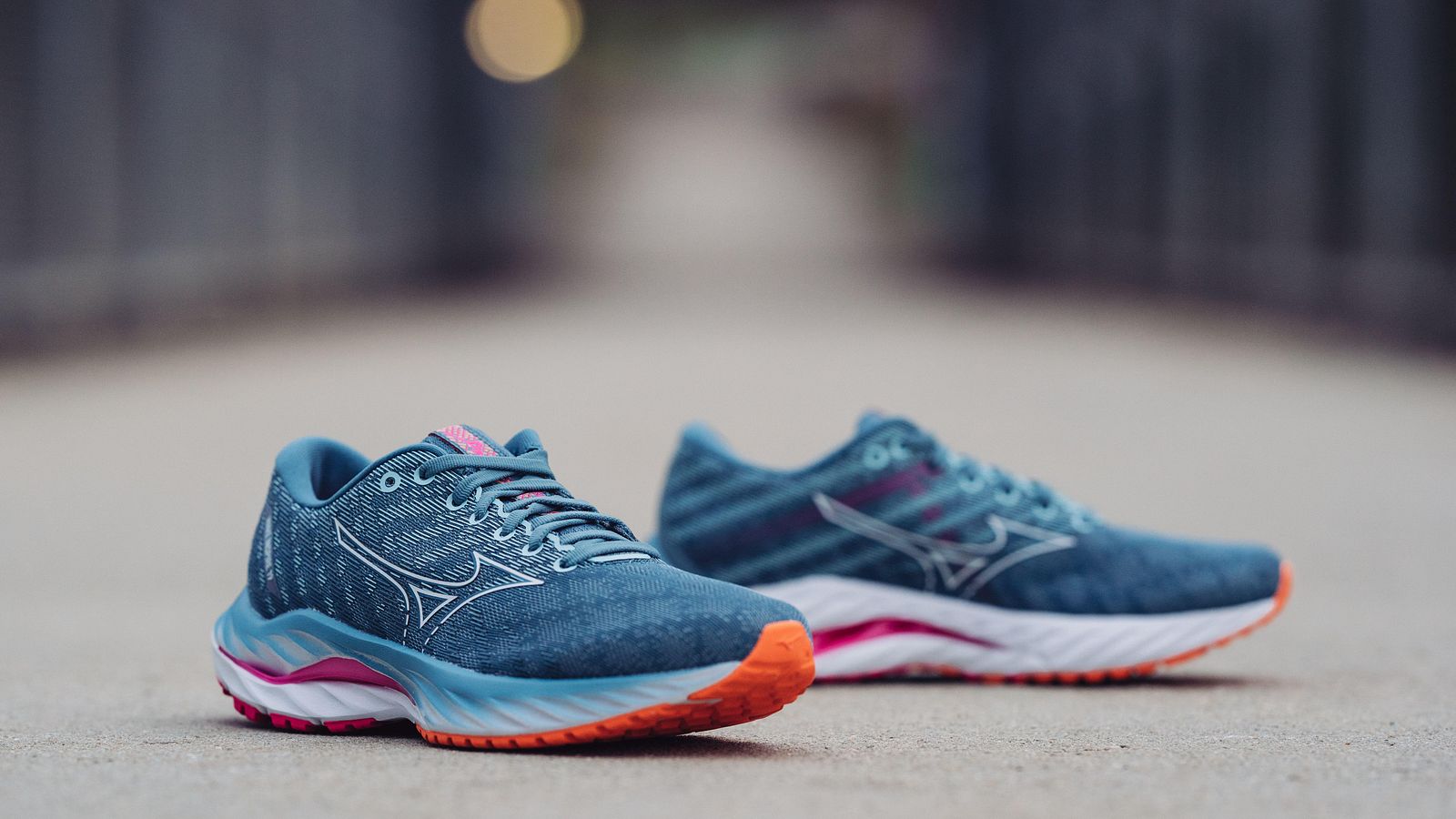Home>Misc>Featured>How Many Miles On A Treadmill To Lose Weight
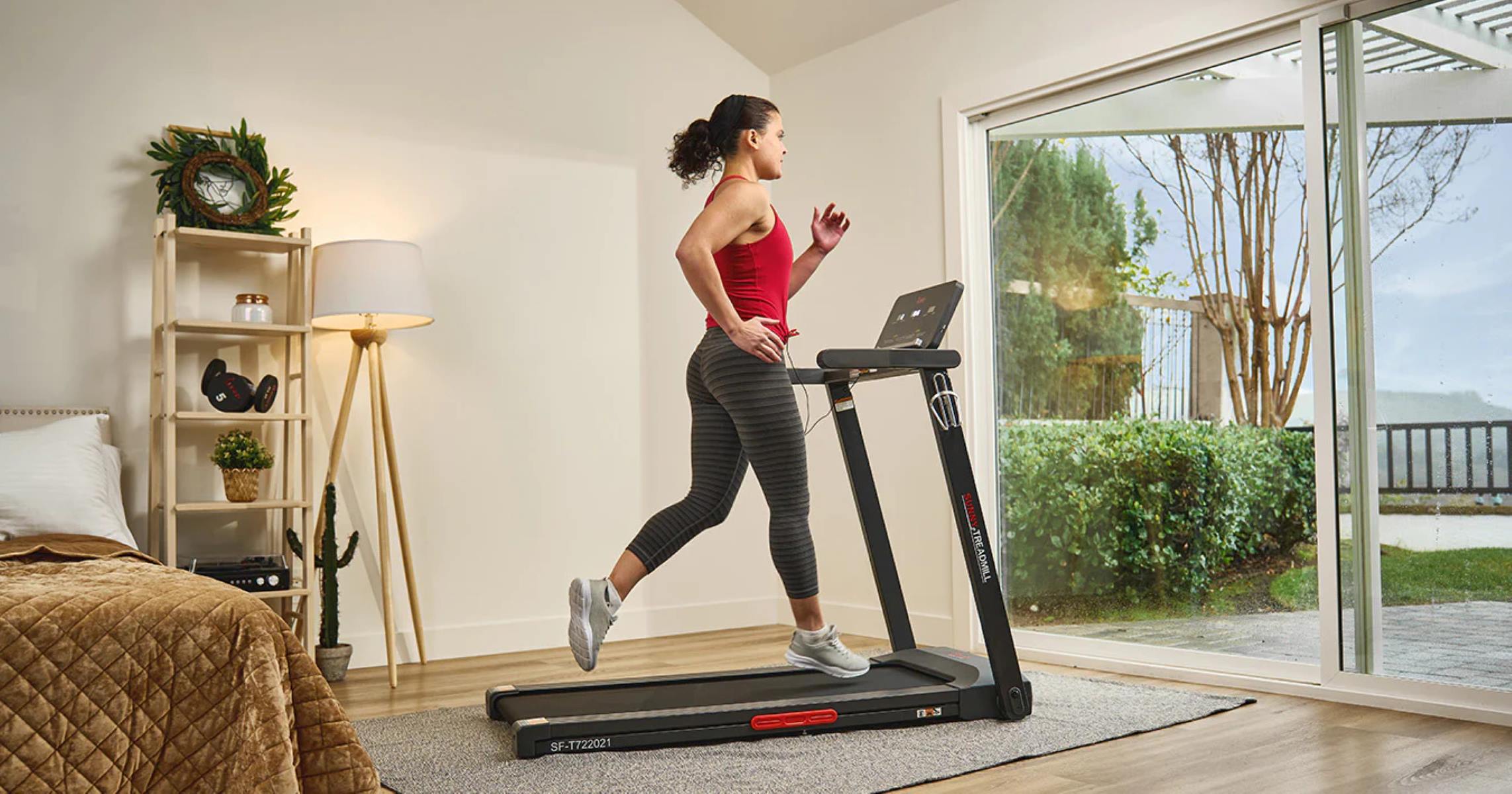

Featured
How Many Miles On A Treadmill To Lose Weight
Modified: August 21, 2023
Featured: Discover how many miles on a treadmill you need to walk or run in order to effectively lose weight and achieve your fitness goals.
Introduction
When it comes to losing weight, finding the right exercise routine is crucial. One popular option is using a treadmill, a versatile piece of equipment that can help you shed the extra pounds and improve your overall fitness. But how many miles on a treadmill do you need to walk or run to lose weight?
Before we dive into the specifics, it’s important to understand that weight loss is a complex process that depends on various factors such as your current weight, metabolic rate, diet, and exercise intensity. While walking or running on a treadmill can contribute to weight loss, it’s not the only factor. A balanced and healthy diet, along with consistent exercise, is essential for achieving sustainable weight loss goals.
That being said, incorporating treadmill workouts into your routine can have numerous benefits besides weight loss. Regular exercise on a treadmill can improve cardiovascular health, strengthen muscles, increase endurance, and boost mood. It’s a convenient and accessible option, as treadmills are available in most gyms and can also be purchased for home use.
However, it’s essential to set realistic goals when it comes to weight loss. Losing weight too quickly is not advisable, as it can lead to muscle loss and negatively impact your overall health. Aim for a slow and steady weight loss of 1-2 pounds per week, which is considered a healthy and sustainable rate.
Keep in mind that the number of miles you need to walk or run on a treadmill to lose weight will vary depending on individual factors such as age, weight, and fitness level. Additionally, the intensity of your workouts, incline settings, and duration also play a crucial role in determining the number of calories burned.
In the following sections, we will explore these factors in more detail and provide guidelines for setting the appropriate speed, duration, and incline for your treadmill workouts to maximize weight loss.
Understanding Weight Loss
Before delving into the specifics of how many miles you need to walk or run on a treadmill to lose weight, it’s important to have a basic understanding of how weight loss occurs.
Weight loss happens when you create a calorie deficit, which means you consume fewer calories than you burn. This forces your body to tap into its energy reserves (fat stores) to make up for the shortfall, resulting in weight loss over time.
On average, a pound of body weight is equivalent to around 3,500 calories. To lose one pound per week, you need to create a calorie deficit of approximately 500 calories per day. This can be achieved through a combination of calorie reduction in your diet and increased calorie expenditure through exercise.
While treadmill exercise can contribute to calorie burning, keep in mind that the number of calories burned varies depending on factors such as your weight, fitness level, and workout intensity. In general, running burns more calories than walking, and higher-intensity workouts lead to greater calorie expenditure.
It’s worth noting that weight loss is not just about burning calories during your treadmill sessions. Regular exercise also helps boost your basal metabolic rate (BMR), which is the number of calories your body burns at rest. By increasing your BMR, you can enhance your overall calorie burning throughout the day.
Additionally, combining treadmill workouts with strength training exercises can help build lean muscle mass. Muscle is more metabolically active than fat, meaning it burns more calories even at rest. By increasing your muscle mass, you can further enhance your calorie burning potential and promote weight loss.
Incorporating a balanced diet alongside your treadmill workouts is crucial for weight loss success. Focus on consuming nutrient-dense foods that are low in calories but high in vitamins, minerals, and fiber. This will provide your body with the necessary nutrients while keeping your calorie intake in check.
While the number of miles you walk or run on a treadmill is a factor in weight loss, it’s important to remember that it’s just one piece of the puzzle. A comprehensive approach that encompasses both exercise and nutrition will yield the best results in your weight loss journey.
Benefits of Treadmill Exercise
Using a treadmill for your workout routine offers a multitude of benefits beyond just weight loss. Here are some of the advantages of incorporating treadmill exercise into your fitness regimen:
- Convenience: Treadmills are easily accessible and can be used in the comfort of your own home or at a gym. This eliminates the need to brave the weather or travel to a specific location, making it a convenient option for consistent exercise.
- Cardiovascular Health: Treadmill exercise is an excellent way to improve cardiovascular health. Walking or running on a treadmill elevates your heart rate, strengthening your heart muscles, improving blood circulation, and reducing the risk of heart disease.
- Weight Loss: Treadmill workouts contribute to weight loss by burning calories and creating a calorie deficit. The number of calories burned depends on factors such as speed, incline, and duration. Regular treadmill exercise, combined with a balanced diet, can help you achieve your weight loss goals.
- Muscular Endurance: Walking or running on a treadmill engages several muscles in your lower body, including your quadriceps, hamstrings, calves, and glutes. Over time, this can help improve muscular endurance and tone your leg muscles.
- Flexibility and Customization: Treadmills offer various settings, including speed and incline adjustments, allowing you to personalize your workouts. You can gradually increase the intensity by adjusting the incline or challenge yourself with interval training to keep your workouts interesting and effective.
- Joint Health: Treadmill exercise is low-impact, which means it puts less stress on your joints compared to activities like running on pavement. This makes it a suitable option for individuals with joint conditions or those who are recovering from injuries.
- Stress Relief: Exercise, including treadmill workouts, releases endorphins, which are natural mood-boosting hormones. Regular physical activity can reduce stress, anxiety, and depression, leading to improved mental well-being.
It’s important to note that the benefits of treadmill exercise extend beyond weight loss alone. Incorporating treadmill workouts into your routine can contribute to overall fitness, health, and well-being. Remember to start at a comfortable intensity level, gradually increase the duration and intensity of your workouts, and consider consulting with a fitness professional if you have any specific health concerns or goals.
Setting Realistic Goals
When it comes to using a treadmill for weight loss, setting realistic goals is key to long-term success. Here are some guidelines to help you establish attainable objectives:
- Assess Your Current Fitness Level: Understanding your current fitness level is crucial in setting realistic goals. Consider factors such as your weight, overall health, exercise history, and any physical limitations you may have.
- Consult with a Healthcare Professional: If you have any underlying health conditions or concerns, it’s important to consult with a healthcare professional before starting an exercise program. They can provide personalized advice and ensure your goals are appropriate for your health status.
- Consider Your Schedule and Commitment: Take into account your daily schedule and commitments when setting your exercise goals. Be realistic about the time you can dedicate to treadmill workouts and aim for consistency rather than trying to squeeze in lengthy sessions that may not be sustainable.
- Focus on Behavior-based Goals: Instead of solely focusing on a specific weight loss target, consider setting behavior-based goals. These goals could include exercising for a certain number of minutes per day, completing a certain number of treadmill sessions per week, or gradually increasing the intensity or duration of your workouts.
- Be Specific and Measurable: Make your goals specific and measurable, so you can track your progress. For example, instead of saying “I want to lose weight,” set a specific goal such as “I want to lose 10 pounds in three months.” This allows you to measure your progress and adjust your approach accordingly.
- Set Both Short-term and Long-term Goals: It’s important to have both short-term and long-term goals. Short-term goals help provide immediate feedback and motivation, while long-term goals keep you focused on the bigger picture. Break down your larger goals into smaller milestones to make them more achievable.
- Be Realistic and Gradual: It’s important to set realistic and gradual goals to avoid frustration or burnout. Aim for a slow and steady rate of weight loss, such as 1-2 pounds per week. This is considered a healthy and sustainable approach that promotes long-term success.
- Celebrate Milestones: Celebrate your achievements and milestones along the way. Whether it’s reaching a certain weight, completing a challenging workout, or sticking to your exercise routine consistently, take time to acknowledge your progress and reward yourself for your hard work.
Remember, setting realistic goals is an essential part of your weight loss journey. By establishing attainable objectives, you will maintain motivation, enjoy the process, and increase the likelihood of achieving long-term success with your treadmill workouts.
Factors Affecting Calories Burned
The number of calories burned during your treadmill workouts is influenced by several factors. Understanding these factors can help you maximize calorie expenditure and achieve your weight loss goals more effectively:
- Body Weight: The more you weigh, the more calories you are likely to burn during exercise. This is because it takes more energy to move a heavier body.
- Exercise Intensity: The intensity of your treadmill workouts plays a significant role in calorie burning. Running or walking at a faster pace or with a higher incline increases your heart rate and energy expenditure, resulting in more calories burned.
- Duration of Exercise: The longer you exercise, the more calories you will burn. Increasing the duration of your treadmill workouts can help create a larger calorie deficit and contribute to weight loss.
- Workout Variability: Varying your treadmill workouts with interval training or incorporating bursts of higher intensity can boost your calorie burning. Alternating between periods of high intensity and recovery can increase your metabolic rate and lead to greater calorie expenditure even after your workout has ended.
- Incline Settings: Running or walking on an incline requires more effort, engaging additional muscles and resulting in a higher calorie burn. Increasing the incline on your treadmill can simulate uphill running or walking, thus increasing the intensity and calorie expenditure.
- Individual Fitness Level: Your fitness level plays a role in the number of calories burned during treadmill workouts. As you become more fit, your body becomes more efficient at performing the exercise, potentially leading to a lower calorie burn. However, increasing the intensity or duration can help counteract this and continue to challenge your body.
- Efficiency of Movement: The efficiency of your running or walking technique can impact calorie expenditure. Proper form and technique can help you maximize the energy expended and avoid unnecessary strain or fatigue.
- Gender: In general, males tend to have a higher muscle mass and may burn a slightly higher number of calories compared to females during exercise. However, individual variations and other factors still play a significant role.
Keep in mind that these factors can vary from person to person, and individual differences affect the number of calories burned during treadmill exercise. The most accurate way to determine your personal calorie expenditure is by using heart rate monitors or fitness tracking devices that take into account your weight, heart rate, and exercise intensity.
Remember that while the number of calories burned is important, it’s just one aspect of your overall weight loss journey. Combining treadmill exercise with a balanced diet and adopting a healthy lifestyle will yield the best results in achieving your weight loss goals.
Determining the Appropriate Speed and Incline
When using a treadmill for weight loss, determining the appropriate speed and incline is vital. Finding the right balance will help you challenge your body, burn more calories, and achieve optimal results. Here are some factors to consider:
- Fitness Level: Your current fitness level should guide your choice of speed and incline. If you are a beginner, start with a comfortable walking pace and a lower incline. As you become more comfortable and build endurance, gradually increase the speed and incline.
- Exercise Intensity: The intensity of your workout is a key factor in determining the number of calories burned. Increase the speed and incline to elevate your heart rate, but still maintain a level that allows you to sustain the effort without compromising your form or risking injury.
- Personal Goals: Consider your weight loss and fitness goals when setting speed and incline levels. If your goal is to burn more calories and improve cardiorespiratory fitness, increase both speed and incline. However, if your primary focus is building endurance or toning muscles, you may focus more on variations in incline rather than speed.
- Interval Training: Interval training, which involves alternating between high-intensity and recovery periods, can be an effective strategy for weight loss. Increase the speed and incline during the intense intervals and then recover at a lower speed and incline. This method can help challenge your body, burn more calories, and boost your metabolism.
- Listen to Your Body: Pay attention to how your body feels during your treadmill workouts. Make adjustments to the speed and incline if you feel it’s too easy or too challenging. Find a pace and incline that allows you to maintain good form and engage the target muscles effectively.
- Variety: Incorporate variety into your treadmill workouts by changing the speed and incline. This not only challenges your body in different ways but also keeps your workouts interesting and prevents boredom. Experiment with different combinations to find what works best for you.
- Use the Treadmill’s Features: Take advantage of the features available on the treadmill, such as pre-set programs or manual settings. These can help guide your workouts and automatically adjust the speed and incline to achieve specific goals, such as weight loss or interval training.
Remember, it’s important to start at a level that is appropriate for your fitness level and gradually progress as you become more comfortable and capable. Don’t be afraid to challenge yourself, but always prioritize safety and listen to your body’s cues. Consistency and progression are key to achieving your weight loss goals on the treadmill.
Recommended Duration for Treadmill Workouts
The duration of your treadmill workouts is an important aspect to consider for effective weight loss and overall fitness. Finding the right balance between duration and intensity will help you achieve your goals. Here are some recommendations:
- Beginner Level: If you’re new to treadmill exercise, start with shorter durations to allow your body to adapt. Aim for 20-30 minutes of moderate-intensity walking or jogging. Gradually increase the duration by 5-10 minutes as your fitness level improves.
- Intermediate Level: Once you have built some endurance, aim for 30-45 minutes of moderate to high-intensity exercise. This can include a combination of walking, jogging, and running at different speeds and incline levels. Push yourself to challenge your cardiovascular system and burn more calories.
- Advanced Level: For those with a higher fitness level, consider extending your treadmill workouts to 45-60 minutes or more. This can include longer interval training sessions or endurance runs to enhance fat burning, increase stamina, and improve overall fitness.
- Interval Training: Interval training, where you alternate between periods of high-intensity exercise and recovery, is an effective way to maximize calorie burn and improve cardiovascular fitness. Start with shorter intervals, such as 1-2 minutes of higher intensity followed by 1-2 minutes of recovery, and gradually increase the duration of each interval as you progress.
- Consistency: Consistency is key when it comes to treadmill workouts. Aim for at least three to five sessions per week to see significant results in weight loss and fitness. Even if you have limited time, shorter workouts are still beneficial, so try to fit them into your schedule whenever possible.
- Listent to Your Body: It’s important to listen to your body’s signals and not overexert yourself. If you feel fatigued or experience pain, take a break or reduce the duration and intensity of your workouts. Recovery and rest days are equally important for allowing your body to repair and adapt.
- Progression: As you become more comfortable and your fitness level improves, gradually increase the duration of your treadmill workouts. Challenge yourself by adding minutes to your workouts or trying more advanced interval training techniques to continue seeing progress and avoid plateauing.
Remember, the recommended durations mentioned here are general guidelines, and it’s important to take into account your individual fitness level, health status, and goals. Listen to your body, be consistent, and gradually progress to find the right duration that works for you. Always prioritize safety and consult with a healthcare professional if you have any specific concerns or medical conditions.
Monitoring Progress
Tracking and monitoring your progress is an essential part of any weight loss or fitness journey. By keeping tabs on your accomplishments, you can stay motivated and make the necessary adjustments to reach your goals. Here are some ways to monitor your progress during treadmill workouts:
- Keep a Workout Log: Maintain a workout log to track the duration, distance, and intensity of your treadmill workouts. You can also note how you felt during the session, any milestones achieved, and any challenges encountered. This log will help you see your progress over time and identify patterns or areas for improvement.
- Use Fitness Tracking Apps or Devices: Utilize fitness tracking apps or wearable devices that can monitor your heart rate, calories burned, and distance covered during treadmill workouts. These tools provide real-time feedback and allow you to analyze your progress and make adjustments as needed.
- Measure Body Metrics: Track your body metrics such as weight, body measurements, and body fat percentage regularly. Although weight alone may not provide a complete picture of your progress, combining it with other measurements can give you a more comprehensive overview of changes in your body composition.
- Monitor Intensity and Speed: Pay attention to the intensity and speed of your treadmill workouts. As your fitness level improves, you should be able to increase the speed or incline while maintaining your targeted heart rate. Gradually progressing in these areas indicates an improvement in overall fitness.
- Assess Stamina and Endurance: Keep an eye on your stamina and endurance during treadmill workouts. Notice how easily you can sustain the exercise, how quickly you recover between intervals, and how long you can maintain a certain pace. With consistent training, you should gradually increase your stamina and endurance over time.
- Take Progress Photos: Take periodic photos of yourself to visually track your physical transformation. Sometimes, changes in body composition may not be reflected in numbers alone, but photos can give you a visual representation of your progress and motivate you to keep going.
- Listen to Your Body: Pay attention to how your body feels and performs during and after treadmill workouts. Notice improvements in energy levels, mood, sleep quality, and overall well-being. Feeling stronger, more energized, and having better recovery are clear signs of progress in your fitness journey.
Remember, progress is not always linear, and there may be times when you experience plateaus or setbacks. It’s essential to stay focused, patient, and committed to your goals. Regularly monitoring your progress will help you stay motivated and make any necessary adjustments to continue moving towards your desired outcomes in your treadmill workouts and weight loss journey.
Avoiding Common Mistakes
When it comes to using a treadmill for weight loss, there are some common mistakes that people often make. Being aware of these mistakes will help you avoid them and make the most out of your workouts. Here are some common mistakes to watch out for:
- Skipping Warm-up and Cool-down: Neglecting to warm up before your treadmill workout can increase the risk of injury. Start with a few minutes of light cardio and perform dynamic stretches to prepare your muscles. Likewise, don’t forget to cool down afterward with some gentle walking and static stretches to promote muscle recovery.
- Using Poor Form: Maintaining proper form is crucial for efficiency and injury prevention. Avoid excessive bouncing, slouching, or overstriding. Keep your chest lifted, shoulders relaxed, and arms swinging naturally. Engage your core muscles and land softly with each step.
- Not Varying Intensity: It’s easy to get comfortable with a certain speed and incline, but sticking to the same routine can lead to a plateau. Mix up your workouts by incorporating interval training, changing terrain, or utilizing pre-set programs on the treadmill to challenge your body and keep progressing.
- Setting Unrealistic Expectations: It’s important to have realistic expectations when it comes to weight loss and fitness. Don’t expect to see immediate results overnight. Sustainable weight loss is a gradual process, so set achievable goals and celebrate smaller milestones along the way to stay motivated.
- Overtraining: Excessive training without proper rest and recovery can lead to burnout, injuries, and hinder progress. Listen to your body and allow for rest days in your workout routine. This will give your muscles time to repair and adapt, leading to better overall performance.
- Ignoring Proper Nutrition: Exercise alone may not lead to significant weight loss if your nutrition isn’t on track. It’s important to follow a balanced diet that supports your fitness goals. Fuel your body with nutritious foods, including lean proteins, fruits, vegetables, whole grains, and healthy fats.
- Not Hydrating Adequately: Staying hydrated is essential for optimal exercise performance and overall health. Drink water before, during, and after your treadmill workouts to prevent dehydration and maintain proper bodily functions.
- Comparing Yourself to Others: It’s easy to get caught up in comparing your progress to others, but remember that everyone’s fitness journey is unique. Focus on your own improvements, celebrate your successes, and avoid getting discouraged by others’ achievements.
- Not Seeking Professional Guidance: If you’re unsure about proper form, intensity levels, or if you have specific health concerns, consider consulting with a fitness professional or personal trainer. They can provide guidance, tailor a program to your needs, and help you avoid potential pitfalls.
Avoiding these common mistakes will help you make progress, stay motivated, and make your treadmill workouts more effective. Stay consistent, listen to your body, and remember that patience and perseverance are key to long-term success in your fitness journey.
Conclusion
Using a treadmill for weight loss can be a highly effective and convenient option. By understanding the factors that contribute to weight loss, setting realistic goals, and monitoring your progress, you can achieve sustainable results. Remember, weight loss is a complex process that requires a combination of regular exercise, a balanced diet, and a commitment to overall health and wellness.
When determining the appropriate duration, speed, and incline for your treadmill workouts, take into consideration your current fitness level, personal goals, and listen to your body’s cues. Gradually increase the intensity and duration of your workouts to challenge yourself and continue making progress.
Avoiding common mistakes such as skipping warm-up and cool-down, using poor form, overtraining, and setting unrealistic expectations is crucial for avoiding setbacks and injuries. Pay attention to your body’s signals and make adjustments as needed.
By monitoring your progress through workout logs, fitness tracking apps, body measurements, and observing improvements in endurance and strength, you can stay motivated and make necessary adjustments to your routine. Remember, consistency is key, and small, sustainable changes over time lead to long-term success.
Incorporating a treadmill workout into your weight loss journey is just one piece of the puzzle. Remember to complement your exercise routine with a balanced diet, stay hydrated, and prioritize rest and recovery. Celebrate your achievements along the way and avoid comparing yourself to others. Each person’s journey is unique, and what matters most is your progress and overall well-being.
So, lace up your sneakers, hop on that treadmill, and take the first step towards achieving your weight loss goals. With determination, perseverance, and an understanding of how to optimize your treadmill workouts, you’re on your way to a healthier, fitter you!




